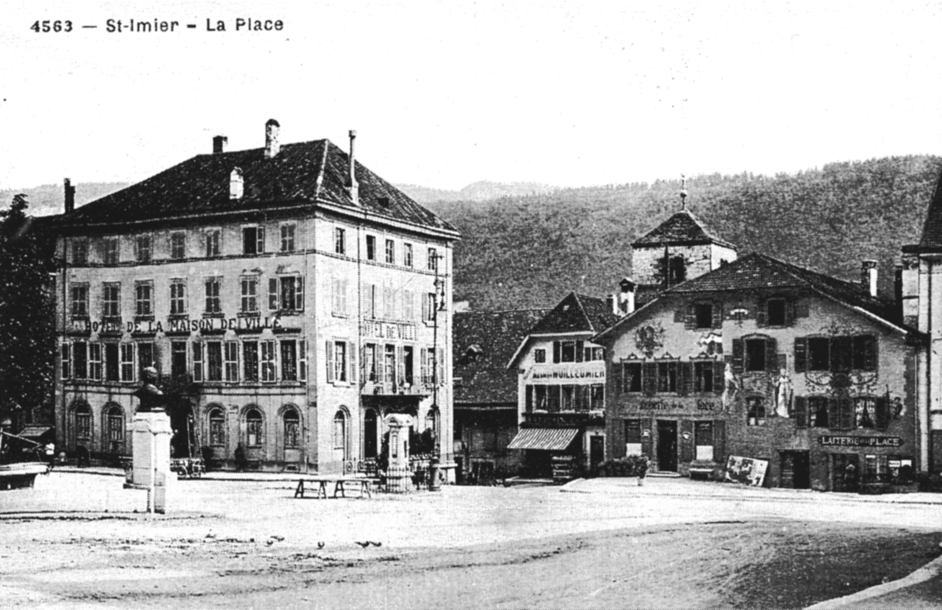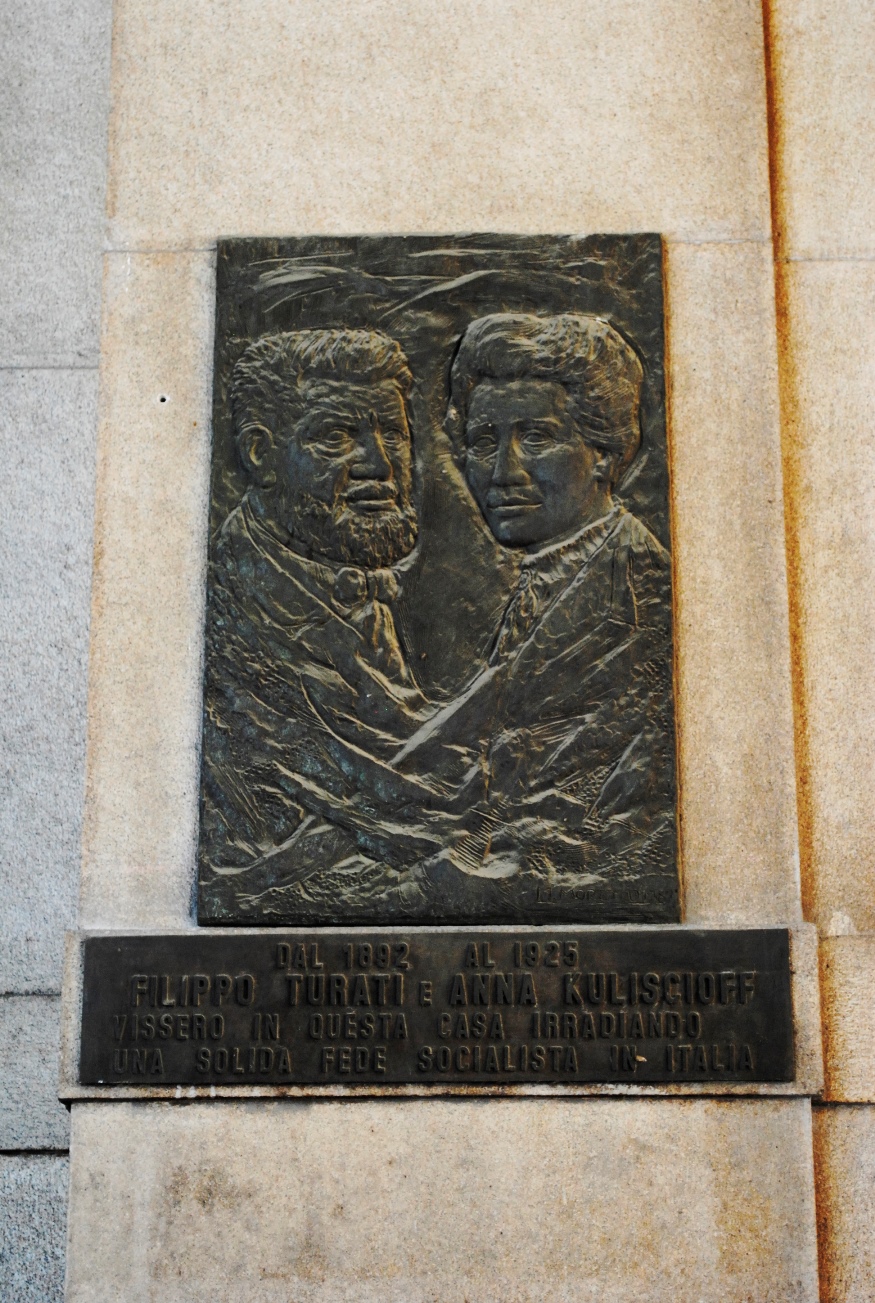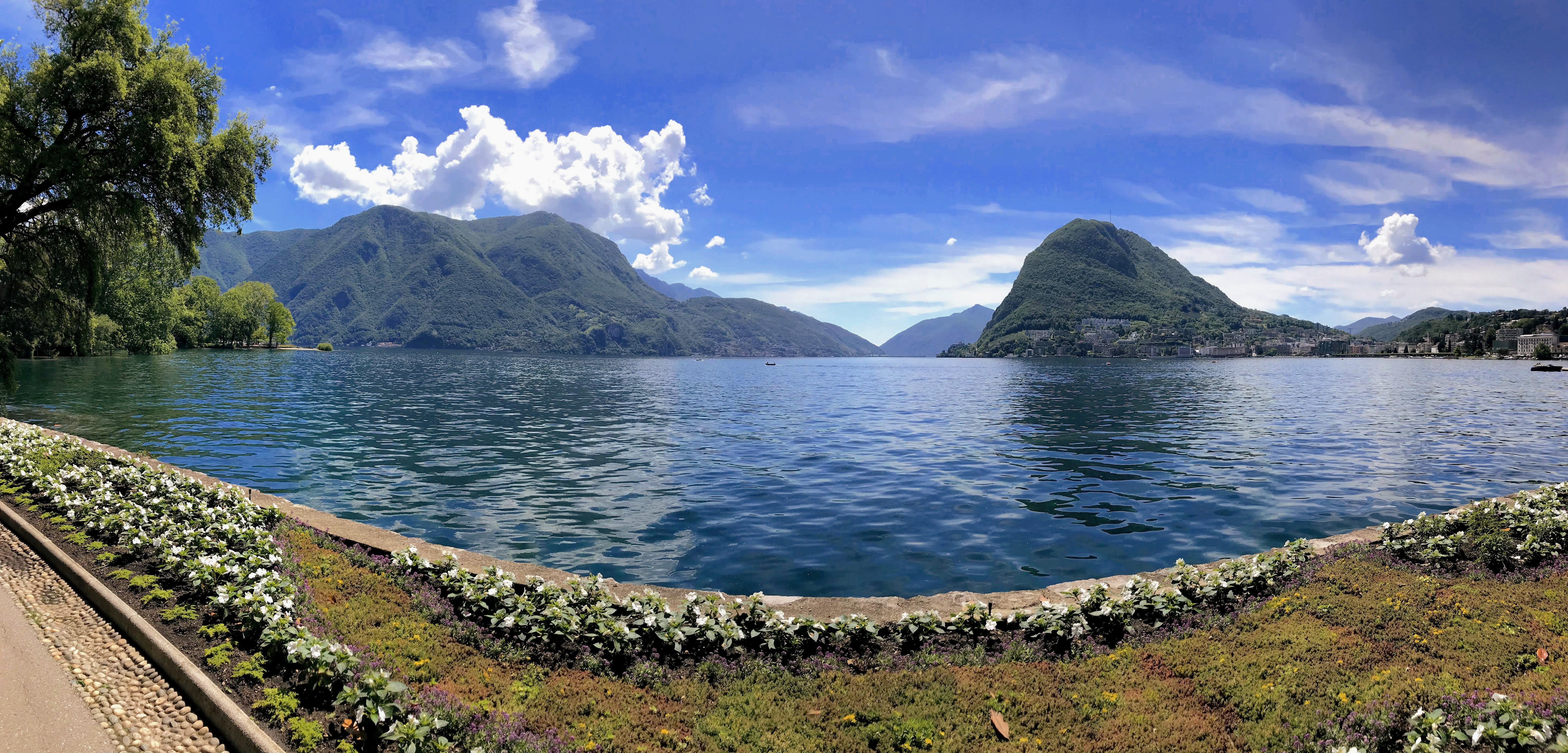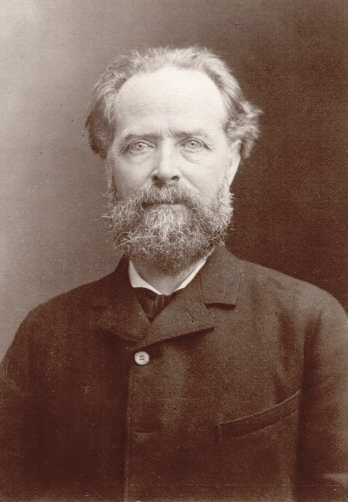|
Lodovico Nabruzzi
Lodovico Nabruzzi (25 June 1846 – 12 February 1916) was an Italian journalist and anarchist. He played a leading role in the dissensions between the revolutionary and evolutionary Italian socialists. He spent several years in exile in Switzerland and France, often forced to undertake menial work and often in trouble with the authorities. After returning to Italy his life continued to be difficult, and he suffered from mental health problems. Although he married and had four children the marriage did not last. He died alone in a public hospital. Early years Lodovico Nabruzzi was born in Ravenna on 27 June 1846, the son of Ettore Nabruzzi and Clotilde Rossi. He came from a middle-class family. He took the name of his grandfather, who had been a municipal engineer and architect. His family included an 18th-century bishop of Molise, Antonio Lucci. He graduated from the municipal high school in 1866, and at the end of that year passed the entrance exam to enroll in the University of ... [...More Info...] [...Related Items...] OR: [Wikipedia] [Google] [Baidu] |
Ravenna
Ravenna ( , , also ; rgn, Ravèna) is the capital city of the Province of Ravenna, in the Emilia-Romagna region of Northern Italy. It was the capital city of the Western Roman Empire from 408 until its collapse in 476. It then served as the capital of the Ostrogothic Kingdom until it was re-conquered in 540 by the Byzantine Empire. Afterwards, the city formed the centre of the Byzantine Exarchate of Ravenna until the last exarch was executed by the Lombards in 751. Although it is an inland city, Ravenna is connected to the Adriatic Sea by the Candiano Canal. It is known for its well-preserved late Roman and Byzantine architecture, with eight buildings comprising the UNESCO World Heritage Site "Early Christian Monuments of Ravenna". History The origin of the name ''Ravenna'' is unclear. Some have speculated that "Ravenna" is related to "Rasenna" (or "Rasna"), the term that the Etruscan civilization, Etruscans used for themselves, but there is no agreement on this point. Ancien ... [...More Info...] [...Related Items...] OR: [Wikipedia] [Google] [Baidu] |
Saint-Imier
Saint-Imier () is a municipality in the Jura bernois administrative district in the canton of Bern in Switzerland. It is located in the French-speaking Bernese Jura (''Jura Bernois''). The Observatoire Astronomique de Mont-Soleil is located above the village. History Saint-Imier is first mentioned in 884 as ''cella de sancti Himerii''. The municipality was formerly known by its German name ''St. Immer'', however, that name is no longer used. Its name refers to Imerius of Immertal, a 7th-century saint. According to the legend of St. Imerius, he settled in the valley as a hermit in the late 6th or early 7th century on a piece of land that bishop Marius of Lausanne gave him as a present. In 884 a ''cella'' (probably a church, farm and monastery) was mentioned on the site. Archeological excavations around the former Church of St. Martin indicate that a village grew up around the ''cella'' around the same time. Two of the 142 graves from the church have been dated to the Early ... [...More Info...] [...Related Items...] OR: [Wikipedia] [Google] [Baidu] |
Genoa
Genoa ( ; it, Genova ; lij, Zêna ). is the capital of the Italian region of Liguria and the List of cities in Italy, sixth-largest city in Italy. In 2015, 594,733 people lived within the city's administrative limits. As of the 2011 Italian census, the Province of Genoa, which in 2015 became the Metropolitan City of Genoa, had 855,834 resident persons. Over 1.5 million people live in the wider metropolitan area stretching along the Italian Riviera. On the Gulf of Genoa in the Ligurian Sea, Genoa has historically been one of the most important ports on the Mediterranean Sea, Mediterranean: it is currently the busiest in Italy and in the Mediterranean Sea and twelfth-busiest in the European Union. Genoa was the capital of Republic of Genoa, one of the most powerful maritime republics for over seven centuries, from the 11th century to 1797. Particularly from the 12th century to the 15th century, the city played a leading role in the commercial trade in Europe, becoming one o ... [...More Info...] [...Related Items...] OR: [Wikipedia] [Google] [Baidu] |
Geneva
Geneva ( ; french: Genève ) frp, Genèva ; german: link=no, Genf ; it, Ginevra ; rm, Genevra is the List of cities in Switzerland, second-most populous city in Switzerland (after Zürich) and the most populous city of Romandy, the French-speaking part of Switzerland. Situated in the south west of the country, where the Rhône exits Lake Geneva, it is the capital of the Canton of Geneva, Republic and Canton of Geneva. The city of Geneva () had a population 201,818 in 2019 (Jan. estimate) within its small municipal territory of , but the Canton of Geneva (the city and its closest Swiss suburbs and exurbs) had a population of 499,480 (Jan. 2019 estimate) over , and together with the suburbs and exurbs located in the canton of Vaud and in the French Departments of France, departments of Ain and Haute-Savoie the cross-border Geneva metropolitan area as officially defined by Eurostat, which extends over ,As of 2020, the Eurostat-defined Functional Urban Area of Geneva was made up of 9 ... [...More Info...] [...Related Items...] OR: [Wikipedia] [Google] [Baidu] |
Amilcare Cipriani
Amilcare Cipriani (October 18, 1844 in Anzio – April 30, 1918 in Paris)Cipriani, Amilcare Dizionario Biografico degli Italiani - Volume 25 (1981) was an Italian socialist, anarchist and patriot. Cipriani was born in in a family originally from . In June 1859, at the age of 15 he fought with Giuseppe Garibaldi alongside [...More Info...] [...Related Items...] OR: [Wikipedia] [Google] [Baidu] |
Anna Kuliscioff
Anna Kuliscioff (; rus, Анна Кулишёва, , ˈanːə kʊlʲɪˈʂovə; born Anna Moiseyevna Rozenshtein, ; 9 January 1857 – 27 December 1925) was a Russian-Italian revolutionary of Jewish origin, a prominent feminist, an anarchist influenced by Mikhail Bakunin, and eventually a Marxist socialist militant. She was mainly active in Italy, where she was one of the first women to graduate in medicine. Biography Anna Kuliscioff was born in 1857 near Simferopol, in Crimea. Her father, Moisei, was one of the five hundred privileged Jewish "merchants of the first guild" who were permitted to reside anywhere in the Russian Empire. Persecuted by the Imperial Russian authorities, Kuliscioff took refuge in Paris, where she met the Italian anarchist Andrea Costa, her future partner. After being expelled from France in 1878, she settled in Italy and became the editor of ''Critica Sociale'', a major socialist paper, in 1891. An activist for causes such as women's suffrage, Anna Kul ... [...More Info...] [...Related Items...] OR: [Wikipedia] [Google] [Baidu] |
Lake Lugano
__NOTOC__ Lake Lugano ( it, Lago di Lugano or , from la, Ceresius lacus; lmo, Lagh de Lugan) is a glacial lake which is situated on the border between southern Switzerland and northern Italy. The lake, named after the city of Lugano, is situated between Lake Como and Lago Maggiore. It was cited for the first time by Gregory of Tours in 590 with the name ''Ceresio'', a name which is said to have derived from the Latin word ''cerasus'', meaning cherry, and refers to the abundance of cherry trees which at one time adorned the shores of the lake. The lake appears in documents in 804 under the name ''Laco Luanasco''. There are various mountains and tourist destinations on the shores of the lake including Monte Brè to the east, Monte San Salvatore west of Lugano, and Monte Generoso on the south-eastern shore. The World Heritage Site Monte San Giorgio is situated south of the lake. Also located to the south is the Cinque Vette Park. The lake is drained by the Tresa, which empties i ... [...More Info...] [...Related Items...] OR: [Wikipedia] [Google] [Baidu] |
Carlo Cafiero
Carlo Cafiero (1846–1892) was an Italian anarchist, champion of Mikhail Bakunin during the second half of the 19th century and one of the main proponents of anarcho-communism and insurrectionary anarchism during the First International The International Workingmen's Association (IWA), often called the First International (1864–1876), was an international organisation An international organization or international organisation (see spelling differences), also known as ....Pernicone, Nunzio (2009). ''Italian Anarchism 1864–1892''. AK Press. pp. 111–113. "Anarchist communism as a coherent, modern economic-political philosophy was first formulated in the Italian section of the First International by Carlo Cafiero, Emilio Covelli, Errico Malatesta, Andrea Costa and other ex-Mazzinian Republicans." Selected works * Carlo Cafiero. ''Revolution.'' Black Cat Press. * ''Il Capitale di Carlo Marx, brevemente compendiato da Carlo Cafiero'', Biblioteca Socialista, n. 5, ... [...More Info...] [...Related Items...] OR: [Wikipedia] [Google] [Baidu] |
Joseph Favre
Joseph Favre (; 17 February 1849 – 17 February 1903) was a famously skilled Swiss chef who worked in Switzerland, France, Germany, and England. Although he initially only received primary education because of his humble origins, as an adult he audited science and nutrition classes at the University of Geneva, and would eventually publish his four-volume , an encyclopedia of culinary science, in 1895. As a young man, he enlisted in Giuseppe Garibaldi's army during the Franco-Prussian War and became an anarchist and a member of the International Workingmen's Association (IWA), also known as the First International. He founded and wrote for various left-wing journals and a magazine for chefs, and also sponsored cooking competitions and exhibitions and launched a chefs' trade union. He would come to favour a more moderate socialism and, like other members of the IWA in Switzerland, eventually rejected anarchism, though he remained active in radical politics. The Bishop of Orléa ... [...More Info...] [...Related Items...] OR: [Wikipedia] [Google] [Baidu] |
Ticino
Ticino (), sometimes Tessin (), officially the Republic and Canton of Ticino or less formally the Canton of Ticino,, informally ''Canton Ticino'' ; lmo, Canton Tesin ; german: Kanton Tessin ; french: Canton du Tessin ; rm, Chantun dal Tessin . is one of the 26 cantons forming the Swiss Confederation. It is composed of eight districts and its capital city is Bellinzona. It is also traditionally divided into the Sopraceneri and the Sottoceneri, respectively north and south of Monte Ceneri. Red and blue are the colours of its flag. Ticino is the southernmost canton of Switzerland. It is one of the three large southern Alpine cantons, along with Valais and the Grisons. However, unlike all other cantons, it lies almost entirely south of the Alps, and has no natural access to the Swiss Plateau. Through the main crest of the Gotthard and adjacent mountain ranges, it borders the canton of Valais to the northwest, the canton of Uri to the north and the canton of Grisons to the northea ... [...More Info...] [...Related Items...] OR: [Wikipedia] [Google] [Baidu] |
Benoît Malon
Benoît Malon (23 June 1841 – 13 September 1893), was a French Socialist, writer, communard, and political leader. Biography Malon came from a poor peasant family. An opportunity to escape the life of a rural labourer presented itself when Benoît was admitted to a seminary school in Lyon. However, instead of becoming a priest, Malon became interested in radical politics through the writings of P.-J. Proudhon. In 1863 he left the seminary and moved to Paris, where he worked in a factory as a dyer. He became a friend of Zéphyrin Camélinat. Camélinat was a friend of Proudhon and a collaborator of Charles Longuet, Karl Marx' son-in-law. Through Camélinat and Longuet, Malon became involved in the French section of the First International, which he joined in 1865. In the factional struggles within the International, Malon sided with the 'anti-authoritarian' followers of Proudhon and Bakunin, against the Marxists. Malon was active in organising factory workers and led seve ... [...More Info...] [...Related Items...] OR: [Wikipedia] [Google] [Baidu] |
Tito Zanardelli
Tito Zanardelli (1848–?) was an Italian journalist and anarchist. At first a proponent of revolution, later he became more moderate and advocated legal means to achieve the goals of the workers. He then retired from politics and spent many years in Belgium as a professor of mnemonics and a prolific author on philological subjects. Early years Tito Zanardelli was born in Vittorio Veneto in 1848. His family were strolling players who traveled around Italy giving mnemonic demonstrations and spreading the gospel. His step-sister was Emilia Tronzio, a native of Cosenza who had lost her parents in a cholera epidemic . In the 1870s she was the mistress of Errico Malatesta, during the period of his activity with the First International. Later she married Giovanni Defendi in London. Zanardelli stayed for long periods in Naples, and became active in Giuseppe Mazzini's movement for Italian unification. In 1869 he was editor of the ''Gazzettino del popolo'' (People's gazette). In 1871 ... [...More Info...] [...Related Items...] OR: [Wikipedia] [Google] [Baidu] |
.png)






